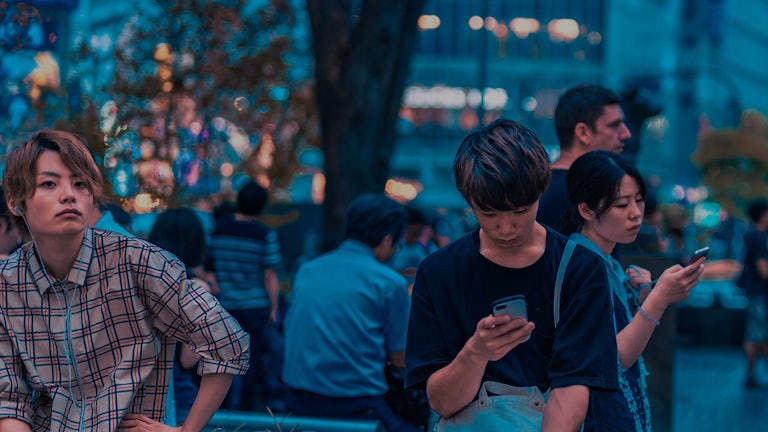Shopping Bag (0)
Shopping bag is empty


Amplify's Yasmin Arrigo explores how brands can help young people feel happier and less isolated...
Some two years on from the global pandemic-related lockdowns, while the headlines may fixate on economic downturns and worldwide political unrest, the effects of isolation still cast a long shadow over us. There's a global "social recession" on the rise, and it's the younger members of society who are feeling it most acutely.
And is it any wonder? While we all experienced the misery of lockdowns, the loss is undoubtedly more devastating for a group so used to living in each other's pockets, at a stage of life where burgeoning social status and creds matter so much. Add to this the sprawling nature of everyday tech—scan your own shopping functions, delivery bags outside your door, an increasingly wordless society, or the metaverse muscling in on real life—and it's no surprise our social connections are fragmenting.
Loneliness and isolation are becoming more prevalent across Western societies, with young people among the worst affected. Even pre-pandemic, rising loneliness among teenagers was a problem as a recent study based on data gathered by the OECD from 15- and 16-year-old school pupils highlights. In a sample of 1million teenagers, school loneliness increased between 2012 and 2018 in 36 out of 37 countries. Nearly twice as many teenagers felt high levels of loneliness in 2018 compared to 2012. The researchers found that school loneliness was higher when more students had access to smartphones and used the internet more hours per weekday. If the internet makes young people feel lonely, it's no wonder the pandemic made them lonelier still.
Indeed, as The Financial Times put it recently: "Young people are suffering a social recession," and this chimes with the findings of Amplify's Young Blood survey, which questioned 2,029 young British men aged 16-24 about what it means to be a man in 2022. Some 81 percent said they had experienced mental health problems in the 12 months prior to the survey. Loneliness and lack of money were the top two causes of these problems, each mentioned by 42 percent of respondents, with social media coming in third. Bullying, exclusion and trolling are all facets of the social media age. Smartphones and social media promised to bring people together, encourage participation and boost our sense of community. Instead, these technologies may be driving people further apart, increasing the widespread sense of social alienation and creating greater isolation. Coupled with pandemic social restrictions that forced groups to entrench in even smaller circles, the diminishing number of friends has fueled a social downturn. Living life through a social media filter, there is no JOMO—only FOMO.
Brands should think hard about how they can play a key role in constructing more positive narratives and helping today's young people become happier and less isolated. Youth audiences increasingly expect brands to act with purpose and not shy away from wider, societal issues—such as loneliness—and explore the ways in which they can play a positive role. There are a number of opportunities for brands to address the needs of modern youth audiences, from providing experience or opportunities that tackle the problem head on to re-evaluating the way they recognize and represent young people in their marketing.
To read the full article visit Muse by Clio.
Yasmin Arrigo is Global Brand + Editorial Director at Amplify.